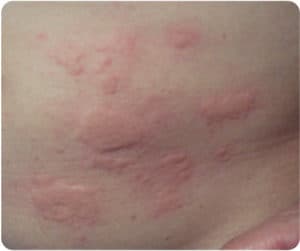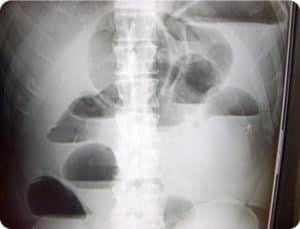Podcast Ep 1: The Rosh Review Podcast Hits The Airwaves – Listen Now!

Creativity is an infinite resource. The more you spend the more you have.
–Maya Angelou
Welcome to Rosh Review’s podcast corollary. Many of you may be thinking, what is a podcast corollary? Great question. We’re making the time-tested questions of Rosh Review audible. Not only will we review the questions and answers, but we will also take the questions “One Step Further™” and review the most important points from each topic. At the end of each episode, we will rapid-fire review the pearls from the episode to drive home key concepts. Before we begin, though, introductions are in order.
Who We Are

Nachi Gupta, MD PhD
- Prior to medicine, Nachi studied math and statistics. A lot of it! He worked in missile defense, as an economist at a hedge fund, and on predicting the winners of sporting events.
- Nachi is currently a PGY3 Emergency Medicine resident at The Mount Sinai Hospital, Icahn School of Medicine in NYC
- EM Passions include mathematical modeling and applications to medicine, critical care, medical education
- Other interests: comedy, traveling, cooking, bass guitar, audio recording, financial modeling, poker, entrepreneurship, wine, NYC

Jeffrey Nusbaum, MD
- Jeff is a former firefighter and EMT and plans to pursue an EMS fellowship as he searches for any possible way to ride a fire truck
- Jeff is currently a PGY3 Emergency Medicine resident at The Mount Sinai Hospital, Icahn School of Medicine in NYC
- EM Passions include: EMS (obvi), critical care, medical education
- Other interests include: the outdoors, grilling, weekend trips with family friends, and NYC street meat carts
Now that that’s out of the way, let’s get to Roshcast: Emergency Medicine Board Review.
Question 1
A 2-year-old girl presents to the ED reluctant to move her left arm. The patient’s father states he grabbed his daughter by her wrist to pull her up from the floor. On exam, there is no swelling or deformity. Which of the following maneuvers should be attempted to correct the injury?
A. Elbow flexion followed by pronation
B. Hypersupination of the forearm
C. Pronation followed by elbow flexion
D. Supination followed by elbow flexion
Teaching card to supplement answer
Question 2
A 63-year-old man is brought to the ED by paramedics secondary to aphasia that began 30 minutes prior to arrival. The man is unable to give any history and has never been to your hospital. His vital signs are T 37°C, BP 180/98 mm Hg, HR 90, and RR 20. His exam is unremarkable except for profound expressive aphasia. Capillary blood glucose is 124 mg/dL. His ECG shows normal sinus rhythm with normal ST segments and T waves. CT scan of the head is normal. Sixty minutes after arriving to the ED, the patient’s aphasia resolves. Which of the following is the most appropriate diagnosis, treatment, and disposition for this patient?
A. Hypertensive emergency; start IV antihypertensive therapy and admit to the medical intensive care unit
B. Stroke; administer tissue plasminogen activator; admit to stroke unit
C. Transient ischemic attack; administer aspirin and dipyridamole; admit to stroke unit
D. Transient ischemic attack; administer low molecular weight heparin and warfarin; discharge home with close neurology follow up
E. Transient ischemic attack; start heparin infusion; admit to stroke unit
Question 3

A 45-year-old woman presents to the ED with the rash seen above. Which of the following is true regarding this condition?
A. Always appears in a dermatomal distribution
B. Firm stroking of the skin produces a wheal
C. Mucous membrane involvement becomes apparent during the progression phase
D. The rash is a mild form of Stevens-Johnson syndrome
Teaching card to supplement answer
Question 4
A 19-year-old man presents with a sore throat and difficulty swallowing. He has had four days of worsening sore throat and fever, but today he was unable to swallow any liquids. Physical examination reveals a muffled voice, difficulty tolerating saliva, and minimal pharyngeal erythema with a midline uvula. He also has tenderness over the hyoid bone. Which of the following managements is most likely indicated?
A. Inhaled racemic epinephrine and discharge home
B. Intravenous antibiotics and admission
C. Intravenous corticosteroids and discharge home
D. Needle aspiration of peritonsilar area
Teaching card to supplement answer
Question 5
This is an audio question. Please hit play in the file above. What is the most likely diagnosis?
A. Chlamydophila pneumonia
B. Cough-variant asthma
C. Croup
D. Pertussis
Teaching card to supplement answer
Question 6
Which of the following is true about myasthenia gravis?
A. Limb weakness and dysarthria are the most common presenting symptoms
B. Muscle weakness tends to worsen after long periods of rest
C. Optic neuritis is commonly associated with the condition
D. Symptoms are decreased by cooling
Teaching card to supplement answer
Question 7

Which of the following conditions, other than postoperative adhesions, is most likely responsible for causing the diagnosis seen in the image above?
A. Adenocarcinoma
B. Incarcerated hernia
C. Intussusception
D. Volvulus
Teaching card to supplement answer

- Nursemaid’s elbow is treated with supination followed by elbow flexion or hyperpronation.
- TIAs should be initially treated with aspirin and dipyridamole and are often admitted to the stroke unit for risk factor assessment.
- The ABCD2 score can be used to risk stratify those with TIAs.
- Stevens-Johnson syndrome can be differed from TEN by mucous membrane involvement.
- Epiglottitis is treated with airway management → IV antibiotics → admission.
- Ampicillin-sulbactam or ceftriaxone are the antibiotics of choice for epiglottitis.
- Pertussis has 3 stages: catarrhal, paroxysmal, and convalescent.
- Pertussis can be treated with macrolide antibiotics.
- In myasthenia gravis, symptoms are decreased by cooling. Myasthenia gravis can be diagnosed with the edrophonium test.
- Severe cases of myasthenia gravis can be treated with IVIG or plasma exchange.
- The #1 cause of SBO is postoperative adhesions. The #2 cause is malignancy.
- Large bowel obstructions are caused by malignancy (most common) followed by volvulus.
Visit our website for thousands of EM board review questions and explanations.
Stay tuned for episode 2. But in the meantime, please, please, please send us any and all feedback. We are new to the podcasting world and want to make sure we are adding value to your education. We can’t do it without your help. Please email us roshcast@roshreview.com. We want to hear from you…don’t be shy.
See you next time,
Jeff and Nachi
P.S. Roshcast’s last post received so much interest from our readers. So if you have a minute, please check out How to Read ECGs Better than a Cardiologist.
P.P.S. Don’t miss Dr. Rosh’s interview with Dr. Peter Rosen Like You’ve Never Seen Him Before.





Comments (0)